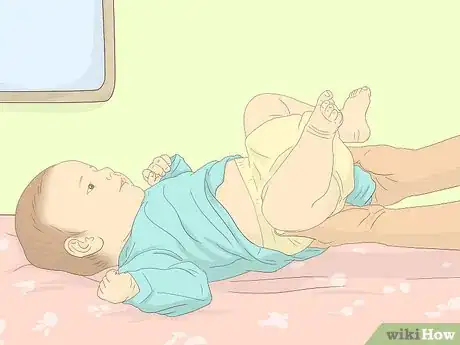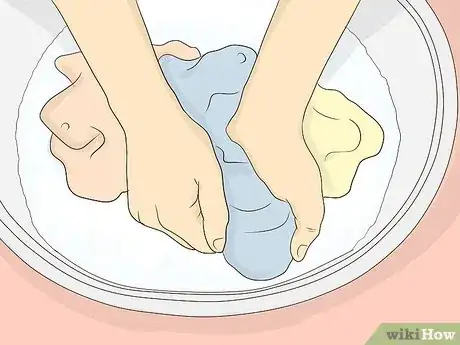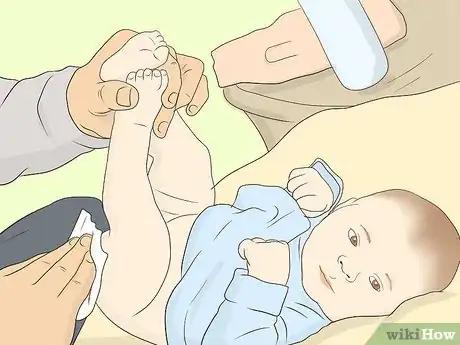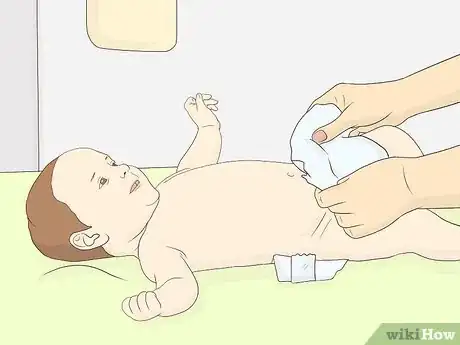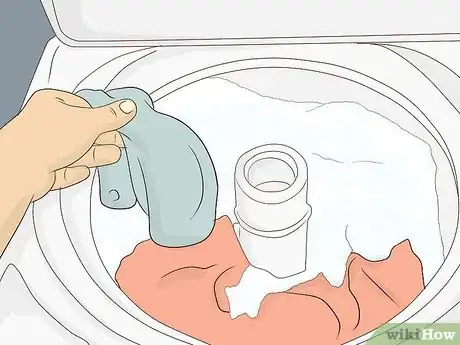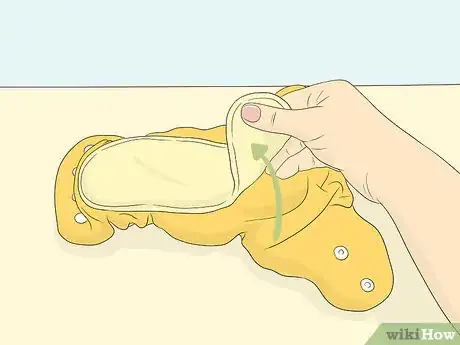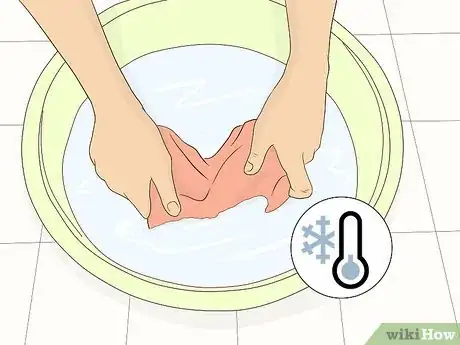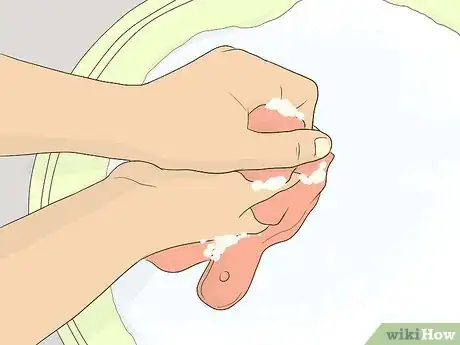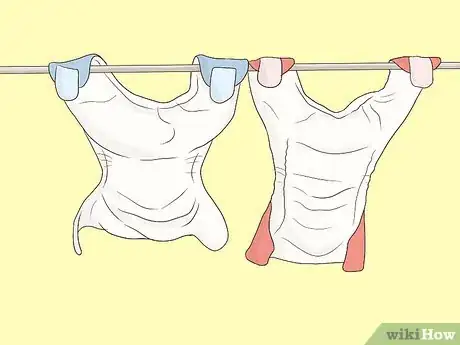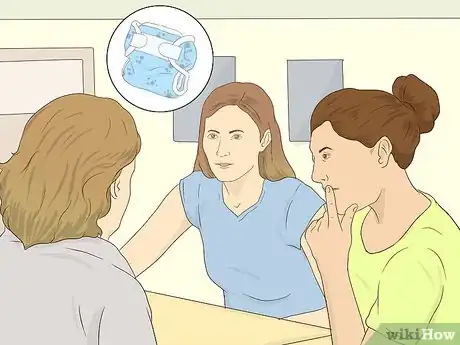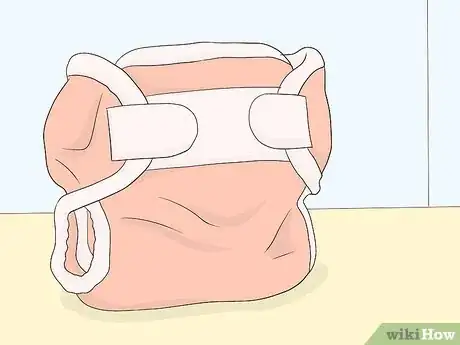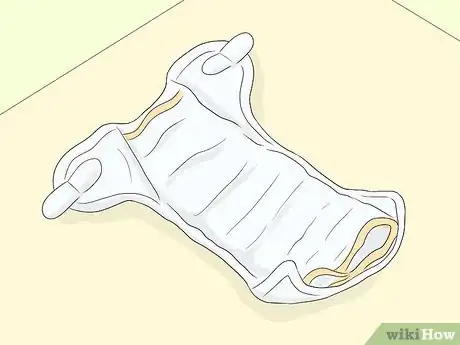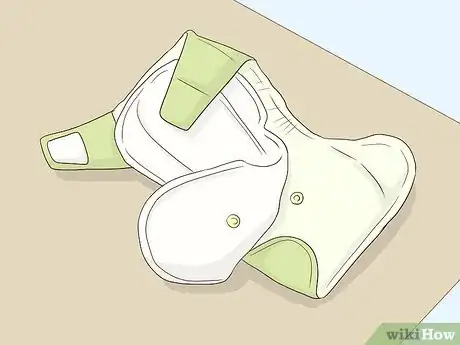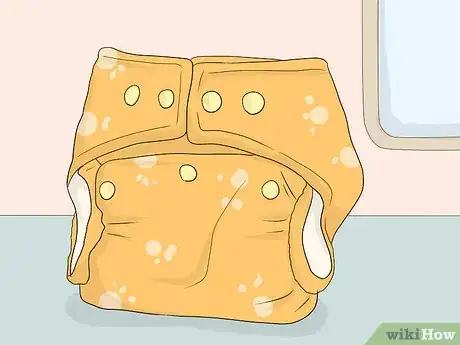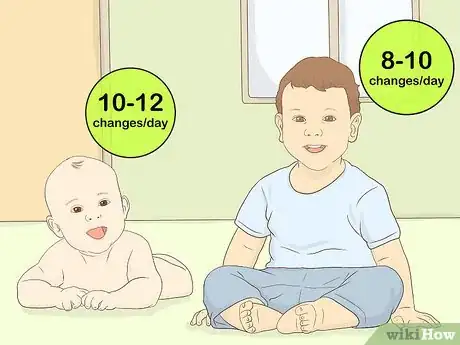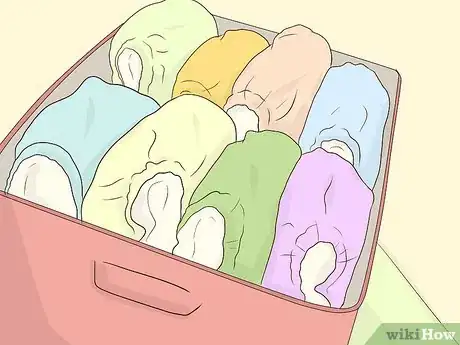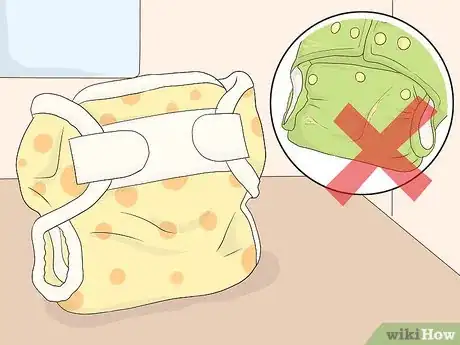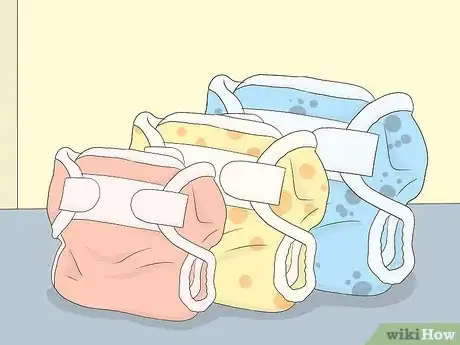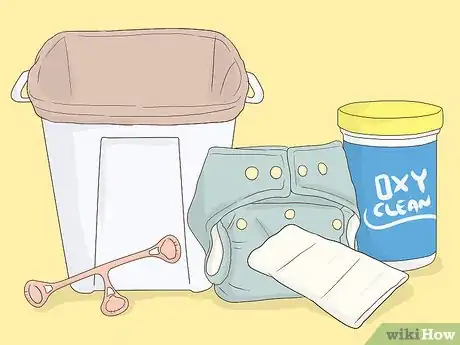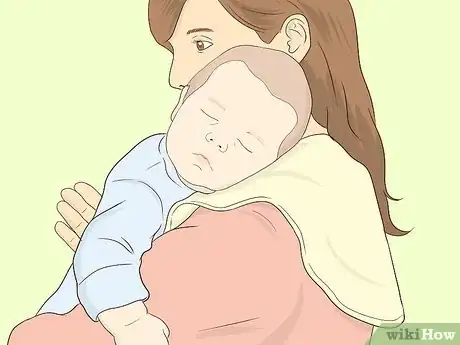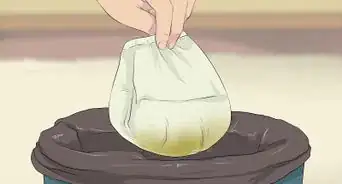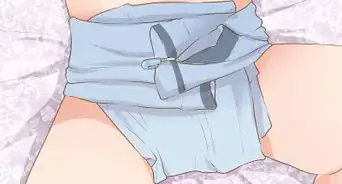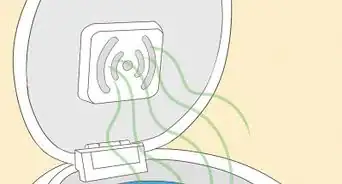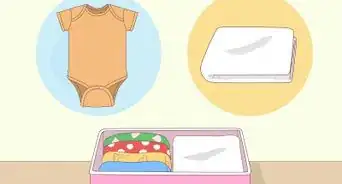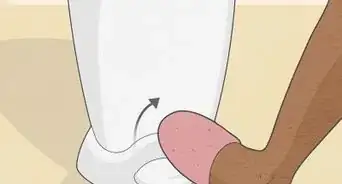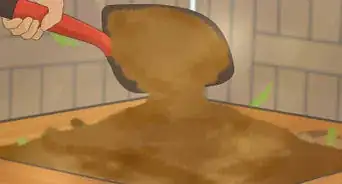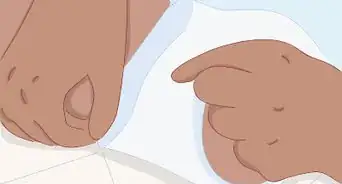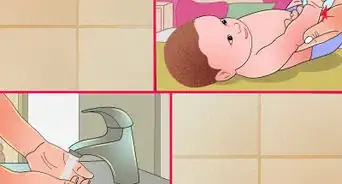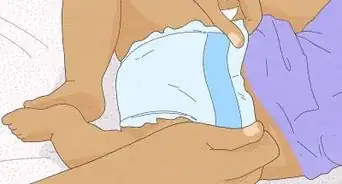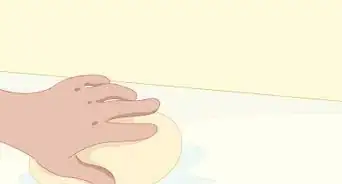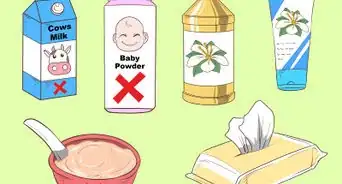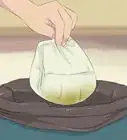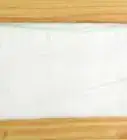This article was co-authored by Denise Stern and by wikiHow staff writer, Christopher M. Osborne, PhD. Denise Stern is a Parenting Specialist and the CEO of Let Mommy Sleep, the country’s leading Baby Nurse and Postpartum Care service. Denise specializes in providing nurturing care to newborns and evidence-based education to their parents. She holds a BA in Public Relations from North Carolina State University. Denise was the US Chamber of Commerce Leading Woman-Owned Business in 2013, a Washington FAMILY Magazine Mother of the Year in 2016, and on the elite White House Summit for Working Families hosted by the President and First Lady Obama in 2014. Let Mommy Sleep is the only company of its kind that holds a local government contract to teach newborn and postpartum care.
There are 7 references cited in this article, which can be found at the bottom of the page.
This article has been viewed 154,819 times.
A growing number of parents choose cloth diapers over disposables for environmental, health, and comfort reasons. Most cloth diapers are made from cotton, which is soft on the baby's skin and able to absorb practically any mess your little one makes. Instead of disposing of the diaper after a single use, you wash your cloth diaper and use it over and over again, possibly for years (and multiple kids!). Once you find the right kind of reusable diaper for your child and get the hang of the changing and washing processes, you'll probably be a cloth convert!
Steps
Changing a Cloth Diaper
-
1Change your baby's cloth diaper as soon as you notice it's wet or soiled. The longer you leave a dirty diaper in place, the more likely it is to eventually leak. Keeping urine or feces against your baby's skin also increases the likelihood of diaper rash. And it's just plain uncomfortable for them![1]
- If you smell urine or feces or see a bulging diaper, it's time for a change. If you're not sure, don't be shy — take a whiff from close up or a peek beneath the diaper.
- A newborn can easily go through a dozen or more clean diapers per day, so plan to check at least every hour or two.
-
2Remove a wet diaper and place it in a diaper pail for washing. Most modern cloth diaper manufacturers recommend using a “dry pail,” with no added liquid beyond any rinse water in the diaper itself. Rinsing a (wet-only) diaper before you put it in the pail isn't necessary, but it may help reduce the odor of urine. Sprinkling baking soda in the pail can also help.[2]
- Some cloth diaper proponents still use the “wet pail” method, in which some water (and perhaps cleaners or anti-odor agents) are kept in the pail with the dirty diapers. This method may degrade cloth diaper components (like seams or hook-and-loop closures) more quickly, though, and is not generally recommended by manufacturers.
- Do not leave the child alone on a changing table while you rinse a diaper off. Unless you have a helper, take care of that after you finish the diaper change.
Advertisement -
3Remove a soiled diaper and clean the baby's bottom with a soft, damp wipe. Poopy diapers require a bit more effort than just wet ones, but it's not so tough that you should say “forget it” and stick with disposable diapers. Just be sure not to leave the baby alone on a changing table while you deal with the dirty diaper — do that later if necessary.[3]
- Shake solid feces into the toilet, and/or scrape off unformed poop with a spatula, plastic spoon, or other tool that is set aside for that specific purpose. Flush.
- Rinse the diaper to remove as much poop as you can, and place the diaper in the pail for washing.
- If your baby is having only breast milk, there is no need to rinse or dump because breast milk will be broken down in the wash washer.
- Instead of rinsing in the sink (or dunking in the toilet), you can buy a diaper sprayer attachment that easily connects to the water line for your toilet.
-
4Put a clean cloth diaper on your baby. The exact process will vary based on the type of diaper you use, but nearly all modern types are simple and rely on hook-and-loop or snap closures (not sharp safety pins!).[4]
- Allow your baby's bottom to air dry for around 15-30 seconds before applying the new diaper — you can fan them with your hand or the clean diaper to speed the drying process.
- If you choose to apply a diaper cream, use one that is designed for cloth diapers. Others may interfere with the absorbent qualities of the cloth.
- If you're putting the diaper on a baby boy, place the folded part of the diaper in the front. If the baby is a girl, put the folded part in the back. This is because boys tend to wet more in the front of the diaper, while girls wet more in the middle and back of the diaper.[5]
- Make sure the back of the diaper comes up to the baby's mid-back. It should fit snugly, but not be so tight that it pinches.[6]
Washing Cloth Diapers
-
1Wash new diapers before their first use. All types of cloth diapers need to be prepped before using. Some are fine to wash and dry once before using, but others made from natural cotton need to be washed and dried about 5 times in a row to remove the natural oils. Otherwise, they will not absorb liquids as well. Refer to the manufacturer's instructions.[7]
-
2Remove any diaper inserts, such as a soaking pad, before you wash them. Refer to the instructions included with the specific type of disposable diaper you're using. In virtually every case, though, if the diaper has more than one component, separate them before washing.
-
3Run the diapers through a cold rinse cycle first. This will help prevent stains from setting in, and will rinse out most of the urine. Don't add any detergent yet. You can do this rinse by hand if necessary.[8]
-
4Follow up with a hot wash and extra rinse cycle. If possible, use a laundry soap that is marketed specifically as cloth diaper-friendly. Most eco-conscious brands will do, since they usually lack the fragrances and enzymes that can cause residue buildup on the cloth. Such residues can cause cloth diapers to leak. Check to see if your diaper manufacturer recommends any specific detergents.[9]
- If necessary, add an oxygenated bleach, not chlorine bleach. Also, instead of adding a residue-creating fabric softener, you can (if desired) add white vinegar to the wash.
-
5Dry the diapers completely before using them again. It may be possible to put some cloth diaper types in the dryer, but it's always preferable to air dry them if you can. The diapers will last longer this way, and your dryer won't be using up electricity and/or gas.[10]
- PUL (polyurethane laminate) covers always need to be air dried. Check the care instructions for your particular diaper brand.
- Wool covers must be hand washed in cold water and air dried.
Choosing the Right Cloth Diapers
-
1Test a few options before you buy a batch of cloth diapers. Cloth diapers come in many different forms and with many unique features. Talk to other parents who've used cloth diapers for their insights — even see if you can borrow a few samples to try out.[11]
- Ask other parents questions like "Which of these did you find prevents leaks better?" or "How hard is it to undo and redo these snaps if the baby is fussy?"
- Just as no two babies are exactly alike, no single diaper type is best for every baby. The only sure way to know what works best in your case is to try out several types.
-
2Try all-in-one diapers (AIOs) first if you're used to disposables. AIO are the closest reusable analogue to disposable diapers — you just wash them instead of tossing them. They are made with the absorbent cloth inside next to your baby's skin, and a PUL (polyurethane laminate) cover attached to the outside.[12]
-
3Use prefolded diapers for simplicity and classic appeal. These are the diapers that your great-grandmother would most easily recognize. Pre-folds are rectangular in shape and divide by length into three sections.[13]
- Follow the included directions and markings that show you how and where to fold the diaper. Use a “snappi” (a flexible plastic harness with gripping "teeth") to hold the diaper together (or, if you insist, safety pins), or place a diaper cover that snaps over it.
-
4Try a pocket diaper for extra protection against wetness. This type of diaper has become increasingly popular in recent years, though it isn't necessarily any easier to deal with than other cloth diapers. These diapers have a waterproof exterior and a pocket where you put the removable insert, which will be either washable or disposable.[14]
- Shop for extra inserts (also called soakers) of various thicknesses. Thicker inserts provide the baby with extra protection for nap and nighttime.
- If fashion plays into your decision-making, pocket diaper exteriors often come in a wide range of colors and patterns.
-
5Use a fitted cloth diaper for heavy wetters. These diapers can be perfect for nighttime because the front, back, and side tabs hold pee in spots where some other reusable types don't. They usually fasten with snaps or hook-and-loop (e.g., Velcro) closures, and are easy to take on and off. Fitted diapers need a waterproof cover.[15]
- Wool diaper covers are great for nighttime use instead of a PUL cover. Just be sure to read about washing and applying lanolin to waterproof them.
Stocking Up without Overdoing It
-
1Buy enough diapers to last 2 or 3 days. A typical newborn requires 10 to 12 changes per day, and older infants and toddlers often need 8 to 10 changes. If you're switching to cloth from disposable diapers, count your average daily diapers used over several days.[16]
- You won't need more than three days' worth of diapers, because by that point your diaper pail will be overflowing with dirty diapers waiting for a wash. Expect to wash diapers every other day. Never leave dirty diapers unwashed for more than three days.
-
2Purchase some disposable diapers to supplement your reusables. While it's a noble goal to completely eliminate the use of disposables, they are nice to have around in certain cases. For instance, you may unavoidably fall behind on your diaper washing and need a quick, clean option. Or, you may need to use a babysitter or daycare center that's more comfortable with (or requires) disposables.[17]
- You may think you'll need to use disposables when you're away from home (for instance, when out shopping), but it's really not any more difficult to use cloth diapers when on the road. Just make sure to bring along a dirty diaper storage bag that seals securely (you can purchase these alongside cloth diapering supplies).
-
3Seek out secondhand cloth diapers. Don't get grossed out by the thought of using another baby's old diapers. Look at it like using secondhand baby clothes — if they're clean and in good shape, they're perfectly safe and fine to use. If, however, they're heavily stained, torn or frayed, or any of the snaps or other closure mechanisms are worn or damaged, don't use them.[18]
- Play it safe and wash the diapers yourself before using them.
-
4Pay attention to sizing. Just as with disposables, most reusable diapers come in different sizes based on the baby's age and weight. Use age as a general guideline, but focus primarily on the weight category in order to get the best fit for your child. Regular leaks are a good sign that the diapers you're using are either too big or too small.
- Some cloth brands offer a "one-size" diaper that will fit from right after the newborn stage until potty training. These can save you money (because they'll fit longer), but may not necessarily provide the same level of fit and leak protection. Try one out and see how it works for you.[19]
-
5Buy necessary accessories. These include diaper covers, extra inserts, diaper liners, “snappis” or pins, cloth diaper-safe rash cream, and a pail or bucket with a lid to store the dirty diapers.[20]
- Keep in mind the two-to-three day diaper supply plan. This means you don't need a box full of diaper pins or a giant pail that could hold a week's worth of diapers.
-
6Consider repurposing cloth diapers after your baby's done with them. Some parents use them for burp cloths, bibs, and changing pads, among many possibilities. Or, lend, give, sell, or donate them so someone else can become a cloth diaper convert!
Expert Q&A
-
QuestionHow tight should a baby's diaper be?
 Jessie DavidsonJessie Davidson is a Child Care Specialist and the CEO and Founder of BabysitPro, which provides online courses for current and aspiring babysitters. Jessie has over 20 years of childcare experience and specializes in best practices for sitters of infants, toddlers, preschoolers, and grade-schoolers. BabysitPro’s courses are unique and age-specific so babysitters can learn detailed information relevant to the children they babysit. Jessie holds a BA in French Studies from Wheaton College and an MA in Visual Anthropology from The University of Southern California.
Jessie DavidsonJessie Davidson is a Child Care Specialist and the CEO and Founder of BabysitPro, which provides online courses for current and aspiring babysitters. Jessie has over 20 years of childcare experience and specializes in best practices for sitters of infants, toddlers, preschoolers, and grade-schoolers. BabysitPro’s courses are unique and age-specific so babysitters can learn detailed information relevant to the children they babysit. Jessie holds a BA in French Studies from Wheaton College and an MA in Visual Anthropology from The University of Southern California.
Child Care Specialist The diaper should fit the baby snugly, but not be so tight that it pinches them.
The diaper should fit the baby snugly, but not be so tight that it pinches them. -
QuestionWhat is the correct way to put on a cloth diaper?
 Jessie DavidsonJessie Davidson is a Child Care Specialist and the CEO and Founder of BabysitPro, which provides online courses for current and aspiring babysitters. Jessie has over 20 years of childcare experience and specializes in best practices for sitters of infants, toddlers, preschoolers, and grade-schoolers. BabysitPro’s courses are unique and age-specific so babysitters can learn detailed information relevant to the children they babysit. Jessie holds a BA in French Studies from Wheaton College and an MA in Visual Anthropology from The University of Southern California.
Jessie DavidsonJessie Davidson is a Child Care Specialist and the CEO and Founder of BabysitPro, which provides online courses for current and aspiring babysitters. Jessie has over 20 years of childcare experience and specializes in best practices for sitters of infants, toddlers, preschoolers, and grade-schoolers. BabysitPro’s courses are unique and age-specific so babysitters can learn detailed information relevant to the children they babysit. Jessie holds a BA in French Studies from Wheaton College and an MA in Visual Anthropology from The University of Southern California.
Child Care Specialist Remove the old diaper and clean off the baby first. Then, lift up the baby's feet and bottom so you can drape a clean, unfolded diaper beneath the infant. If the baby is a boy, arrange the folded part of the diaper in front. If they baby is a girl, put the folded part of the diaper in the back.
Remove the old diaper and clean off the baby first. Then, lift up the baby's feet and bottom so you can drape a clean, unfolded diaper beneath the infant. If the baby is a boy, arrange the folded part of the diaper in front. If they baby is a girl, put the folded part of the diaper in the back. -
QuestionDo we need to wash cloth diapers before the first use? If yes, what is the process?
 ChristopherTop AnswererBefore using, try to wash your cloth diapers with baby-safe laundry soap and water in at least one washing and drying cycle. There's more information in this article about how to Wash Diapers.
ChristopherTop AnswererBefore using, try to wash your cloth diapers with baby-safe laundry soap and water in at least one washing and drying cycle. There's more information in this article about how to Wash Diapers.
Warnings
- Talk to your pediatrician if you notice any rashes. All babies get diaper rash from time to time, but you want to make sure there is not an allergy or sensitivity present in the cloth diaper or detergent you are using.⧼thumbs_response⧽
Things You'll Need
- Cloth diapers/covers
- Laundry soap (without enzymes or brighteners)
- A bucket or trash can with a lid to store dirty diapers.
References
- ↑ https://www.babycenter.com/0_how-to-change-a-cloth-diaper_3846.bc
- ↑ https://www.babycenter.com/0_how-to-change-a-cloth-diaper_3846.bc
- ↑ https://www.babycenter.com/0_how-to-change-a-cloth-diaper_3846.bc
- ↑ https://www.babycenter.com/0_how-to-change-a-cloth-diaper_3846.bc
- ↑ Jessie Davidson. Child Care Specialist. Expert Interview. 11 June 2021.
- ↑ Jessie Davidson. Child Care Specialist. Expert Interview. 11 June 2021.
- ↑ https://www.thebump.com/a/how-choose-use-cloth-diapers
- ↑ https://www.thebump.com/a/how-choose-use-cloth-diapers
- ↑ https://www.thebump.com/a/how-choose-use-cloth-diapers
- ↑ https://www.babycenter.com/0_how-to-change-a-cloth-diaper_3846.bc
- ↑ https://www.babygearlab.com/topics/diapering-potty/best-cloth-diaper/buying-advice
- ↑ http://www.parents.com/baby/care/american-baby-how-tos/cloth-diapering/
- ↑ http://www.parents.com/baby/care/american-baby-how-tos/cloth-diapering/
- ↑ https://www.babygearlab.com/topics/diapering-potty/best-cloth-diaper/buying-advice
- ↑ http://www.parents.com/baby/care/american-baby-how-tos/cloth-diapering/
- ↑ http://www.parents.com/baby/care/american-baby-how-tos/cloth-diapering/
- ↑ https://www.babygearlab.com/topics/diapering-potty/best-cloth-diaper/buying-advice
- ↑ http://www.parents.com/baby/diapers/cloth/modern-moms-guide-cloth-diapering/
- ↑ http://www.parents.com/baby/diapers/cloth/modern-moms-guide-cloth-diapering/
- ↑ https://www.babygearlab.com/topics/diapering-potty/best-cloth-diaper/buying-advice
- ↑ Denise Stern. Parenting Specialist. Expert Interview. 19 February 2021.
About This Article
To use cloth diapers, start by buying enough diapers to last 2 to 3 days. Make sure to wash the diapers before using them to make them more absorbent. Additionally, change a cloth diaper as soon as it feels wet, and if it’s a poopy diaper, shake anything solid into the toilet, rinse the diaper as best you can, and place it in a diaper pail. In order to clean the diapers, run them through a cold rinse cycle followed by a hot wash and extra rinse cycle before drying them completely. To learn how to choose the best cloth diapers for your baby, keep reading!
